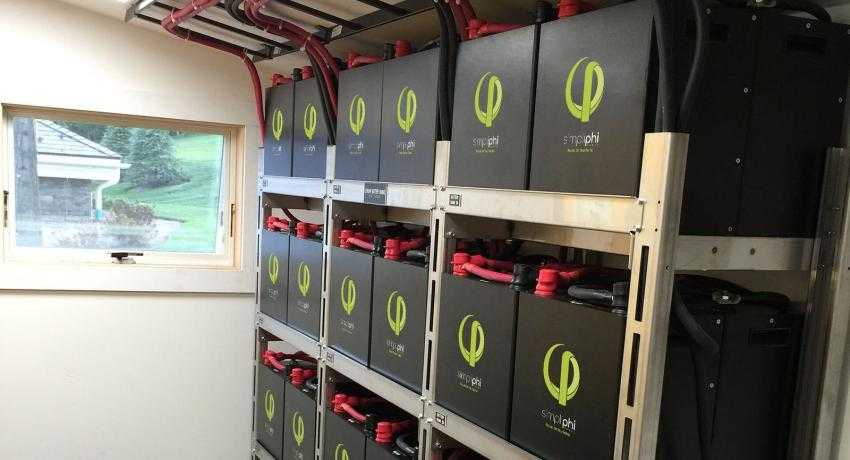Home Solar Battery: A Simple Solution For Clean Energy
It seems ironic that essential services are often provided to people at a high cost. Although this is the 21st century, water and electricity still cannot be taken for granted, even if you live in an economically advanced country.
As this tongue-in-cheek quote aptly puts it, “The electric bill won't give you a fright, if only you remember to turn off the light.” Yes, if only!
Fortunately, many people are now tapping in to their own renewable sources of energy, by installing solar panels on the rooftop of their homes.
They are also able to give surplus energy back to the grid, and get credit for it from their local electric company. However, this still keeps them connected to the grid, as the surplus energy is calculated in real time.
This means that during the day, when the solar energy produced is more than the energy consumed within the house, the excess energy goes back to the grid. When the sun is down at night, no solar energy is produced which many times means conventional energy sources are still needed (nuclear, coal, natural gas).
This significantly offsets any credit you receive for providing energy during the day, especially in the winter when heating costs are higher during the night and the days are shorter.
Home solar battery can solve the problem!
The above-described dilemma can be solved, by installing a large solar battery in your house. (This is also called a battery bank or an energy bank.) With this, the surplus energy can be stored in the battery during the day, and used to power the house at night.
Better still would be a battery system that stores energy during the day and all off-peak hours, and is used to dispense energy during peak hours when grid-based electricity is more expensive.
This system can help you dramatically minimize the electric energy you consume from the grid. Furthermore, the unused solar energy that is produced during the day, left over after powering your house and the large solar batteries, is now indeed a bonus and can be fed back to the grid in exchange for credit (money).
Here you should also know that battery banks are not limited to solar panels. In fact, they can be installed even with a grid-only energy system. However, this kind of installation would only make sense in two scenarios:
- You experience frequent power outages, and hence feel the need for a backup.
- The electric company charges different rates for peak and off-peak hours. In this case, you use the battery bank to store energy during off-peak hours, and dispense energy during peak hours. This way, your consumption from the grid is minimized during peak hours, thus reducing costs.
The cost equation of installing solar panels with batteries
Environmental enthusiasts will be glad to know that this system is indeed a money saving system. However, you definitely need to be committed for the long term.
Here are some interesting figures:
- To install a solar panel system on your rooftop, it can cost $15,000 - $20,000. Of course, this is variable based on your expected energy consumption.
- Battery banks come at an additional cost, and their rates vary from $6,000 to $15,000. Again, this wide range is purely based on the amount of energy you wish to store.
- It can take 7-9 years to break even on installation costs for a solar panel system. If you also install a large solar battery, it will take even longer.
While these costs are factored into sustaining the system – as they typically come with a 10-year warranty – the prices are exorbitant, even for the most environment conscious homeowner. This is the reason less than 20% of homeowners take the plunge to install a solar panel system on their rooftops. Less than half that number decide to spend more which includes a large battery bank.
As you can imagine, this small percentage presently includes only those who are unflinchingly devoted to technology and the environment.
Hope for the Future
The good news is that the government recognizes the need to incentivize the use of renewable energy, especially solar energy. So it offers a 30% federal solar tax credit based on the total installation costs.
In addition, if your federal tax liability is below the assigned percentage during the year of installation, the difference can be carried over to the following year, until you exhaust the entire tax savings offered. Finally, this tax limit is also expected to be reduced to 22% by the year 2021, as installations costs are also expected to get cheaper.
Now for the energy battery banks. A typical home battery can store anywhere from 5-10 kilowatt hours. Tesla’s Powerwall can store 13.5-kilowatt hours of energy, making it the most popular home battery today. In fact, this is the same battery used in Tesla’s high-end, electric cars! This can serve your home well since it can power your lights and fridge.
Key Takeaway
Building a renewable energy system that is completely off the grid is presently an expensive affair. However, keep in mind that we are still in the nascent stages of development. Today, over 20% of total energy consumption is driven by renewable sources, with solar energy right at the top.
As this technology develops and becomes more cost-effective, you can expect this number to increase exponentially in the future. As American Statesman Ken Salazar playfully put it, “I think the future for solar energy is bright”. True that!




